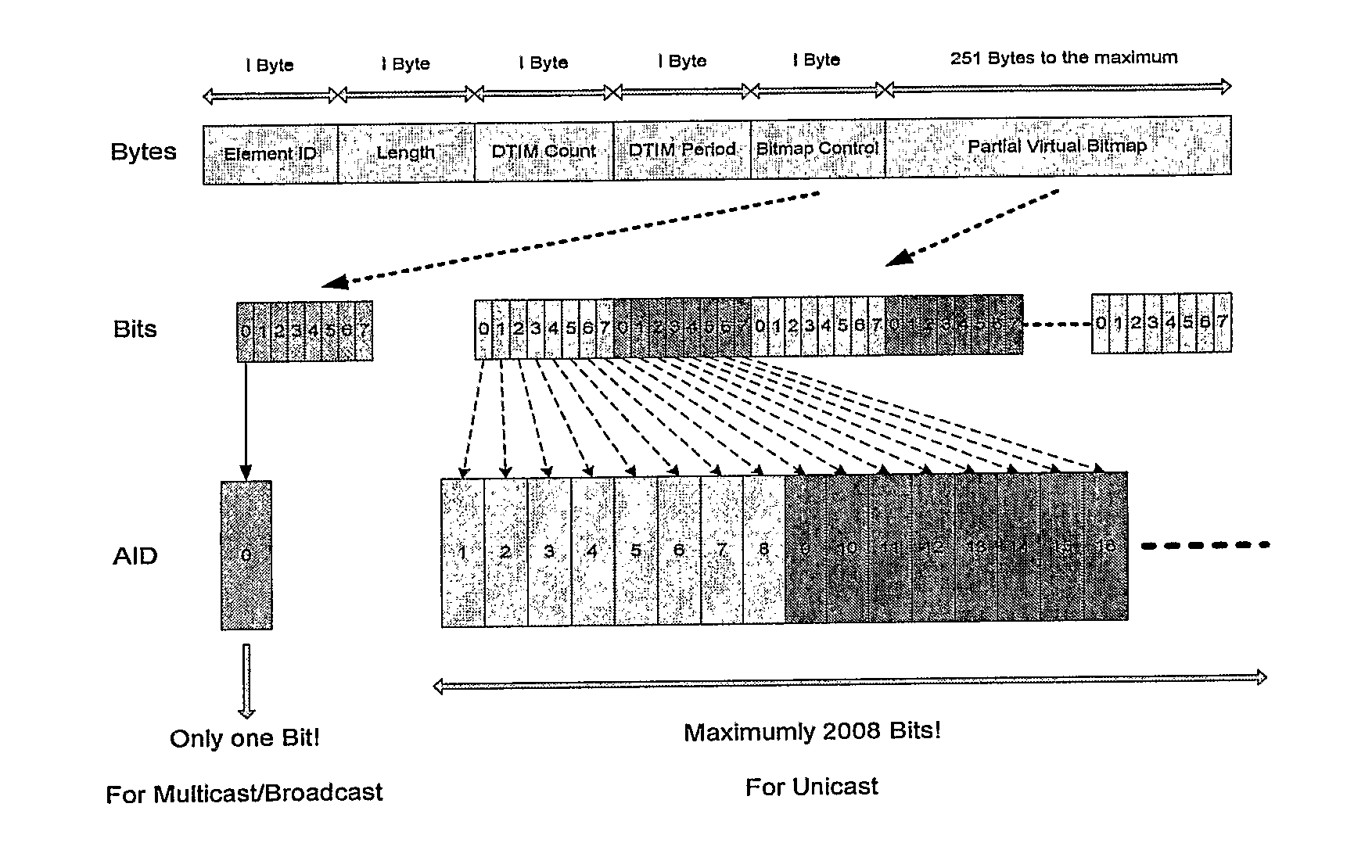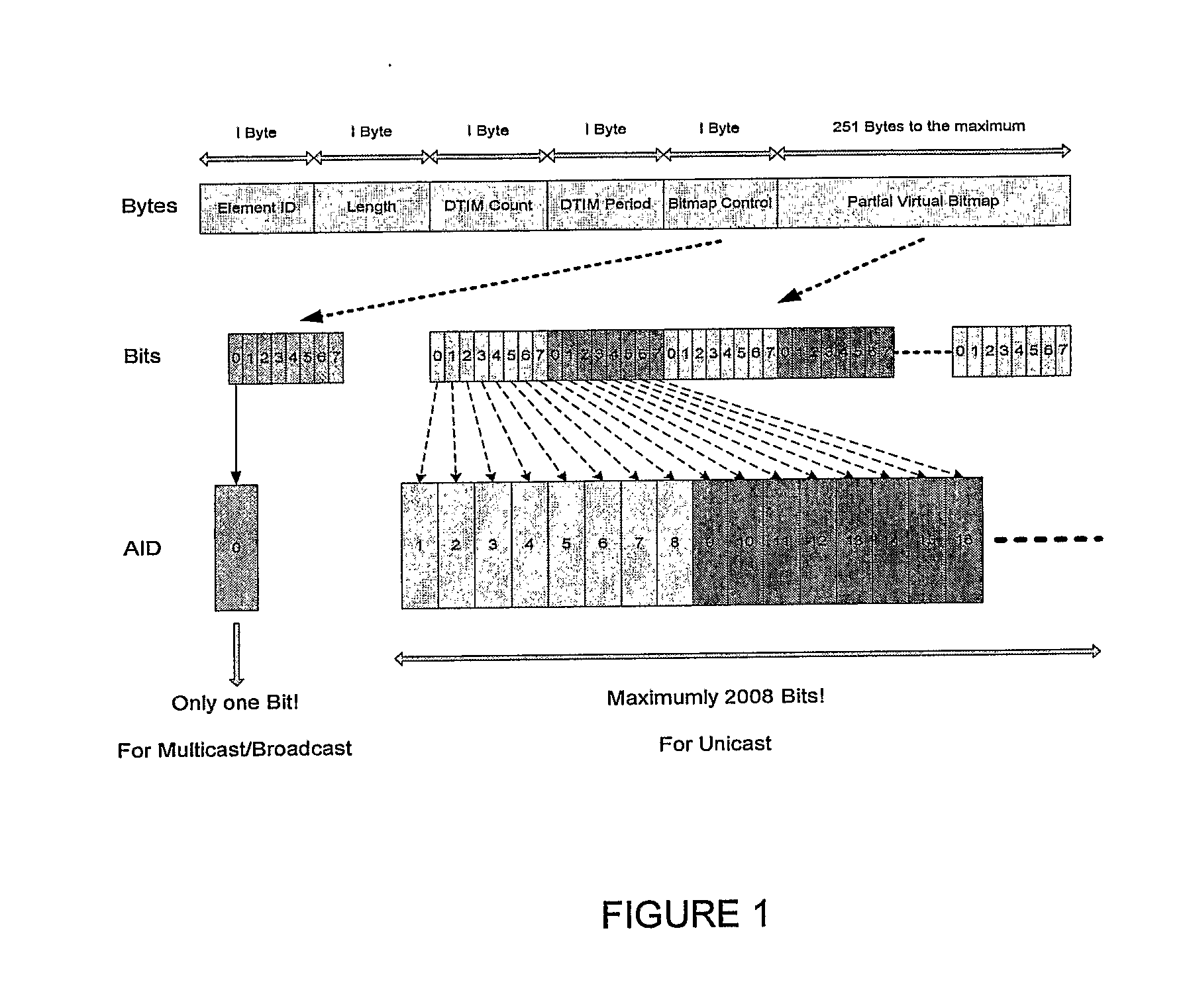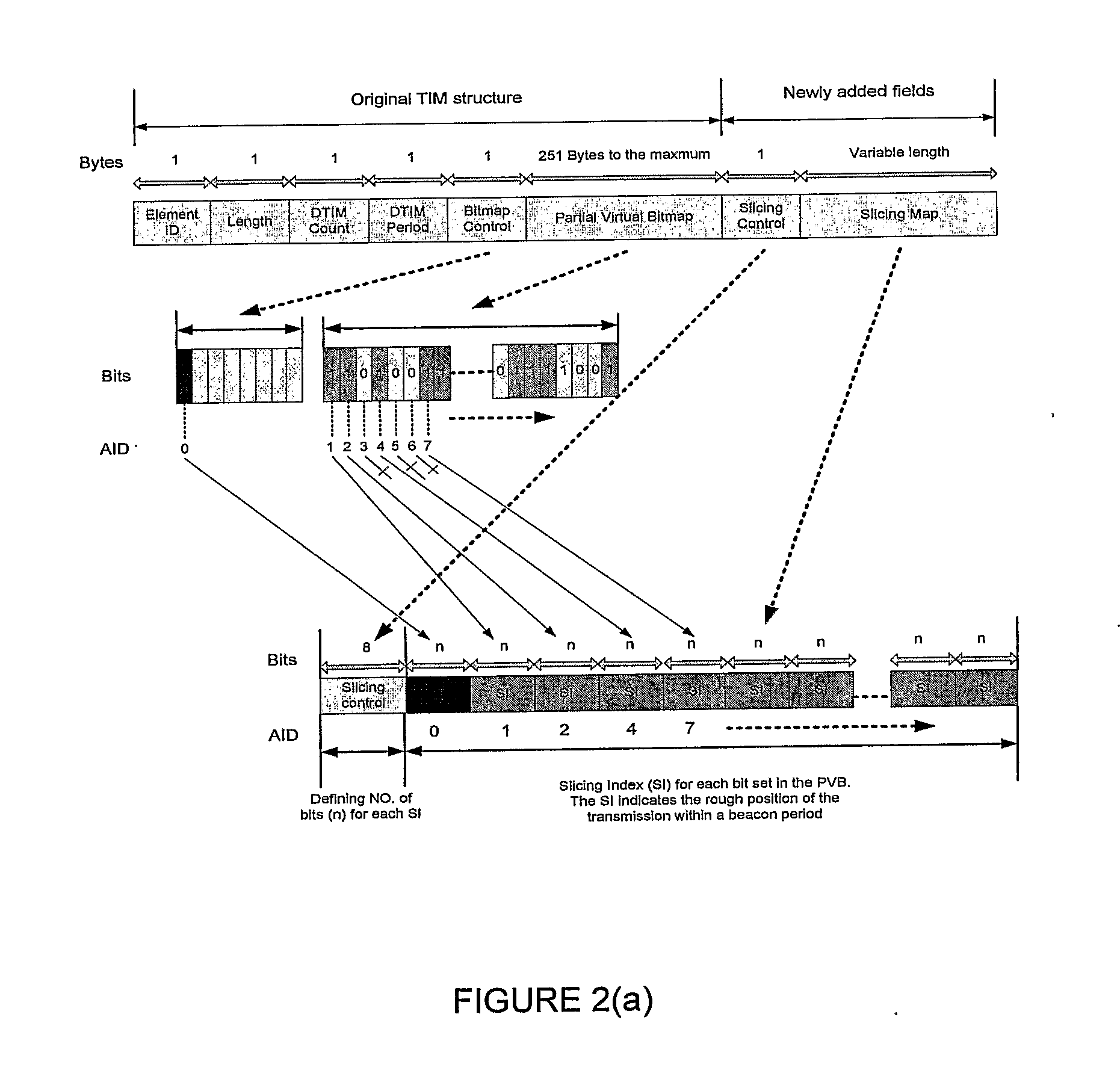Method and apparatus for power management in WLAN
a power management and wlan technology, applied in power management, instruments, high-level techniques, etc., can solve the problems of affecting the network performance of the device, affecting the service life of the mobile station, and consuming a large amount of power for the mobile station
- Summary
- Abstract
- Description
- Claims
- Application Information
AI Technical Summary
Benefits of technology
Problems solved by technology
Method used
Image
Examples
Embodiment Construction
[0033]The original TIM structure in the IEEE 802.11 standard, as described above, does not carry sufficient information for supporting a more complicated power saving scheme. An embodiment of the invention provides a TIM structure that is able to support time slicing operations for power management and addresses the problems mentioned above.
[0034]FIG. 2(a) shows an exemplary embodiment of a TIM structure of a Beacon frame. Compared with the original TIM structure, two fields, slicing control field and slicing map field, are added at the end of the partial virtual bitmap (PVB) for supporting time slicing. In addition, the significance of the PVB bits changes within this new structure. These amendments and modifications are detailed as follows.
[0035]1) Slicing Control Field:
[0036]The slicing control field, as shown in FIG. 2(a), includes 1 byte of data. This field regulates the number of bits used for each slicing index (SI) in the slicing map field. For example if the byte of data in...
PUM
 Login to View More
Login to View More Abstract
Description
Claims
Application Information
 Login to View More
Login to View More - R&D
- Intellectual Property
- Life Sciences
- Materials
- Tech Scout
- Unparalleled Data Quality
- Higher Quality Content
- 60% Fewer Hallucinations
Browse by: Latest US Patents, China's latest patents, Technical Efficacy Thesaurus, Application Domain, Technology Topic, Popular Technical Reports.
© 2025 PatSnap. All rights reserved.Legal|Privacy policy|Modern Slavery Act Transparency Statement|Sitemap|About US| Contact US: help@patsnap.com



